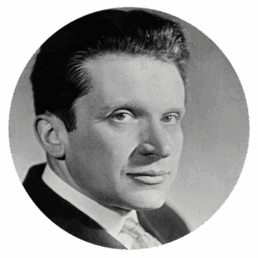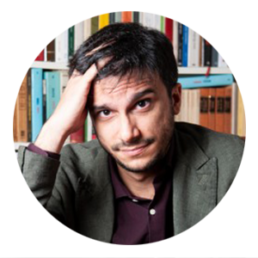CONCERTS 2026 | SYMPHONY
ALPESH CHAUHAN
WEINBERG Concerto for cello and orchestra op. 43
BRUCKNER Symphony No. 1 in C minor
Program
Mieczysław Weinberg
Concerto for Cello and Orchestra op. 43
Mieczysław Weinberg (1919-1996) traversed the 20th century at its most dramatic. Born in Warsaw to a Jewish family of Moldavian and Ukrainian descent, he fled to Minsk during the Nazi occupation, losing his parents and sister in a death camp. In the Soviet Union she found the support and esteem of Šostakovič , but ended up equally in the grip of a regime that after the end of the war found anti-Jewish persecution one of its countless scapegoats. The victims were his father-in-law, the famous actor Solomon Michoėls, who was assassinated by the KGB, and then Weinberg himself, arrested on suspicion of phantom anti-Soviet plots. Thus, even after Stalin’s death, the music of this immense composer remained on the margins. The composer of 22 symphonies, seminal works such as “The Passenger” and “The Idiot,” soundtracks, chamber and concertante music, Weinberg stands out as the missing but decisive building block for understanding artistic development in the Soviet Union. His cello concerto, dedicated to Rostropovič, condenses the tormented and dramatic nature, the lyrical ignitions and unfathomable melancholies of one of the greatest composers of the 20th century, to whom Mario Brunello has dedicated a passionate rediscovery effort.
Anton Bruckner
Symphony No. 1 in C minor
Composed between 1865 and 1866, Anton Bruckner’s Symphony No. 1 premiered in Linz in January 1868 under his direction. Years later, between 1890 and 1891, the composer made a dedicated revision at the University of Vienna, where the work was enthusiastically received. The number “one” at the head of this work should not mislead or suggest that it was a still immature attempt to investigate the symphonic field. Bruckner had already given birth to two other symphonies, which he himself did not allow into the official numbering. The First reveals all the distinctive traits of Bruckner’s style: the solid structure, the organ-like polyphonic language, the mighty crescendos, the lacerating dramatic tension, the brass standing out like lofty rocks on which the intentions of the strings break. It is no coincidence that the composer himself, always reluctant to evaluate his own work positively, considered this creation to be one of his best.
Orchestra of the Teatro Comunale di Bologna
45 min. before the start of the concert, the audience is invited to an in-depth discussion of the program by Luca Baccolini, which will be held on the lower floor of the Theater.
Luca Baccolini
journalist, music popularizer and writer, works with the Bologna editorial office of Repubblica and is on the editorial staff of the monthly Classic Voice. For Newton Compton he has published ten books on the history of Bologna. He is the author of theatrical subjects and collaborates as an essayist and popularizer with the most important Italian lyrical symphonic institutions.
SECTOR 1
Full: €45
Over65: €35
Reduced30-35: €30
U30: €25
SECTOR 2
Full: 40€
Over65: 30€
Reduced30-35: 25€
U30: 20€
SECTOR 3
Full: 35€
Over65: 25€
Reduced30-35: 20€
U30: 15€
SECTOR 4
Full: €15
Tickets at €10 for all students enrolled at the University of Bologna, the Academy of Fine Arts of Bologna and the G.B. Martini Conservatory of Music for concerts of the 2026 Symphonic Season.
On sale only during Ticket Office presale hours (Tuesday to Friday from 12 to 6 p.m. and Saturdays from 11 a.m. to 3 p.m.), from one week before the concert, by presenting university badge and self-certification of enrollment for the current year.
This post is also available in: Italiano (Italian)





